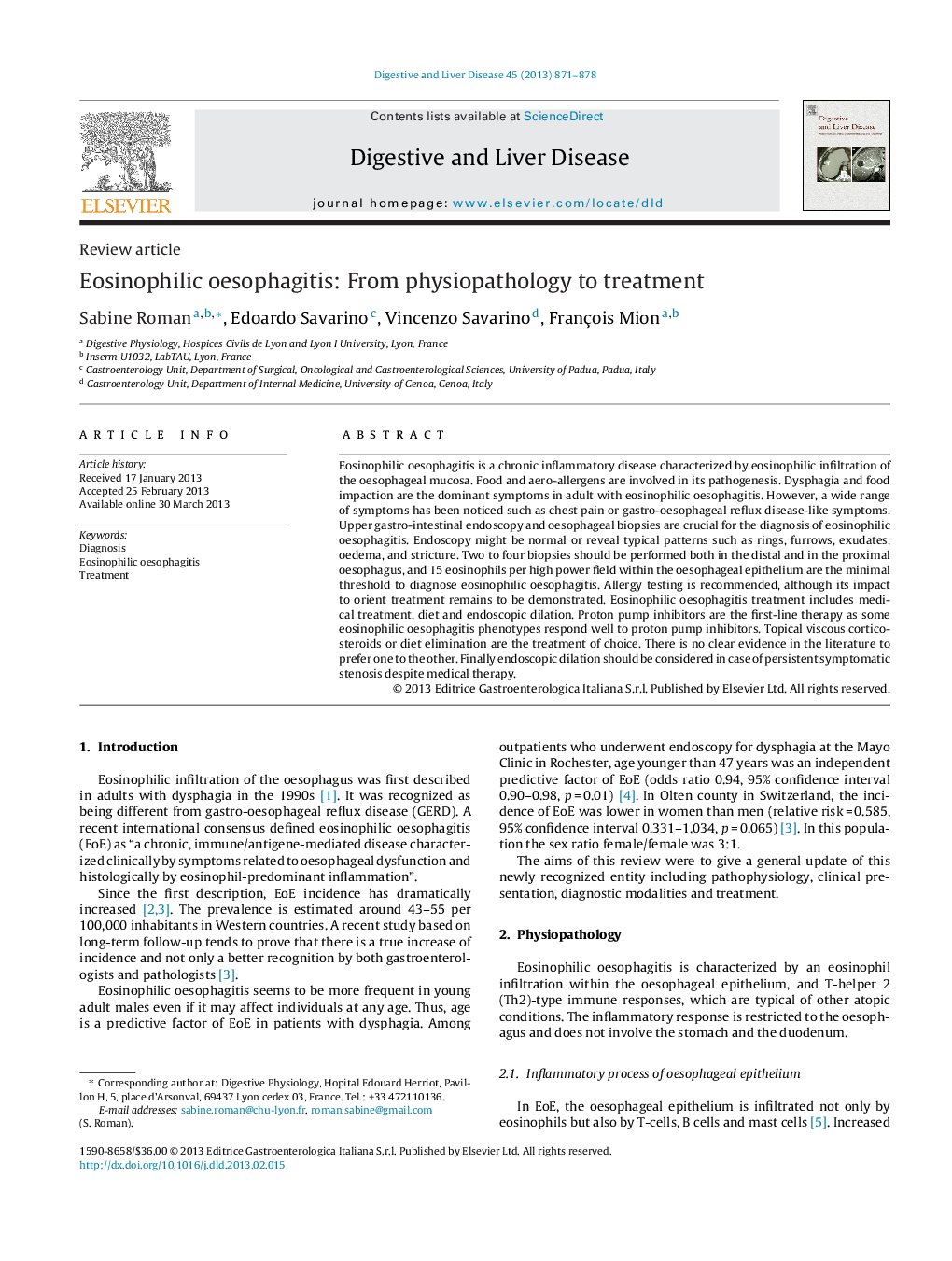| Article ID | Journal | Published Year | Pages | File Type |
|---|---|---|---|---|
| 6088668 | Digestive and Liver Disease | 2013 | 8 Pages |
Eosinophilic oesophagitis is a chronic inflammatory disease characterized by eosinophilic infiltration of the oesophageal mucosa. Food and aero-allergens are involved in its pathogenesis. Dysphagia and food impaction are the dominant symptoms in adult with eosinophilic oesophagitis. However, a wide range of symptoms has been noticed such as chest pain or gastro-oesophageal reflux disease-like symptoms. Upper gastro-intestinal endoscopy and oesophageal biopsies are crucial for the diagnosis of eosinophilic oesophagitis. Endoscopy might be normal or reveal typical patterns such as rings, furrows, exudates, oedema, and stricture. Two to four biopsies should be performed both in the distal and in the proximal oesophagus, and 15 eosinophils per high power field within the oesophageal epithelium are the minimal threshold to diagnose eosinophilic oesophagitis. Allergy testing is recommended, although its impact to orient treatment remains to be demonstrated. Eosinophilic oesophagitis treatment includes medical treatment, diet and endoscopic dilation. Proton pump inhibitors are the first-line therapy as some eosinophilic oesophagitis phenotypes respond well to proton pump inhibitors. Topical viscous corticosteroids or diet elimination are the treatment of choice. There is no clear evidence in the literature to prefer one to the other. Finally endoscopic dilation should be considered in case of persistent symptomatic stenosis despite medical therapy.
